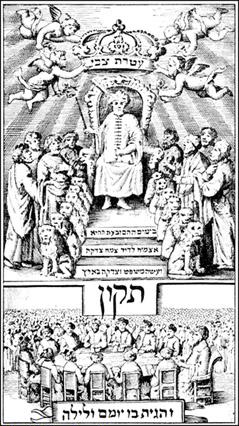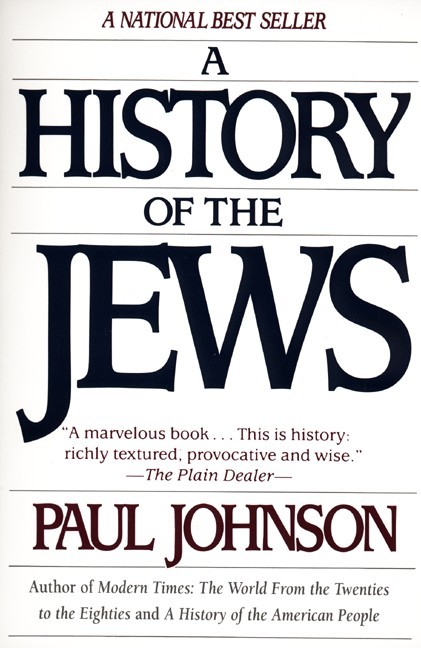 From a sect of Jews to a world dominating religion that defeated the Roman Empire, the story of Christianity is – for better or worse – intimately intertwined with Jewish history.
From a sect of Jews to a world dominating religion that defeated the Roman Empire, the story of Christianity is – for better or worse – intimately intertwined with Jewish history.
In the beginning of the second century it looked as if Christianity would die out. Many of them were Essenes, who believed in celibacy. They simply could not replace their numbers from within or without. And it probably would have died out if not for a man named Paul of Tarsus.
He was raised a Pharisee. He converted to Christianity on the basis of a vision of Jesus that he claimed to see while going on the road one day. In this vision he was told that his mission was to spread the word about Christianity. Paul realized from the outset that the success of Christianity lay not with the Jews but with the non-Jews.
Paul said that the “New” Testament cancelled the “Old” Testament; the ideas of Christianity are the culmination of the Hebrew bible. Once their Messiah came it was no longer necessary to observe the Sabbath, dietary laws, circumcision, etc.
Then Paul went out to sell this to the pagan world. And there was no better salesman than he.
He had an enormously receptive audience because he was selling the moral dream of Judaism – love, fairness, honesty, monotheism (albeit imperfect monotheism; it was certainly monotheistic in comparison to the Roman theologies of the time). He was also selling the coming redemption of the world. The early Christians believed that the “Second Coming” of Jesus was imminent. It was a matter of years or perhaps decades. Now, 2,000 years later, they are still waiting. However, that was not the expectation in the early years. The kingdom of heaven on earth was imminent.
In a world dominated by Roman cruelty — where the majority of the world’s population was slaves or vassals to Rome; where the idea of human freedom (as we in the Western world know it) was unimaginable – if you spoke in terms of Jewish moral values, albeit minus the lifestyle that embodies it, you had a ready audience. If you said that slaves are as good as masters; that the poor as good as the rich; that the weak are as great as the mighty; and that God loves everyone; and that everyone could make it to eternity – people were going to listen.
On top of that, when you made it easy by saying you don’t have to do anything except say that you believe, then have the ticket to instant success.
Rome Grows Old
Christianity spread like a wildfire after the downfall of Bar Kochba in about 135 CE. Almost one third of the Roman Empire became Christian in little more than 100 years.
That development evoked a great and bitter response from Rome, which saw it as a subversive religion that bred rebellion and diminished the power and stature of the Caesars. Therefore, the Romans persecuted the Christians without mercy, inventing all sorts of fiendish methods of public execution and torture in order to dissuade conversion to the new faith.
However, the harder the Romans tried to put it down the more popular it became.
The years 260 to 360 CE saw a fundamental change in non-Jewish world, a change that would forever alter the Jewish world. The Roman Empire, which had reigned supreme for almost 300 years and been in existence almost 500, started to decline.
When empires reach the zenith of their strength they begin to get old fast. An observer in the year 260 CE would have scoffed at the statement that the Roman Empire would not be around forever. However, in the perfect hindsight of history, we can see how the fabric of the empire was beginning to unravel. It was not what it once was – neither externally nor internally.
There were many causes for it. One of the main ones was Christianity. Rome was not strong enough — or able enough or ruthless enough — to destroy the Christians. Yet, in persecuting them they guaranteed their popularity among the downtrodden.
The second cause came from external pressure. Rome had bitten off more than it could chew. It had controlled virtually the entire civilized world – from England in the west to India in the east; from Gaul and Germany in the north to the sub-Sahara in Africa. All those places paid tax to Rome, but policing such an empire required an enormous expenditure of effort and money.
After a while, the empire simply got tired. In the early days, volunteers would head off enthusiastically to places like England. There was a romance to it and for lure of financial or other gain. After a period of time, however, few wanted to go; everyone wanted to stay in Rome. Why go to fight against the Gauls and Germans? Why bother with the Persians and Parthians?
Once the Roman Empire got tired it began spiraling downward until it essentially collapsed on its own. In the early 400s, when Rome was finally conquered and sacked by the barbaric tribes of northern Europe – the Gauls, Visgoths, etc. who plunged the world into the Dark Ages — it was essentially a shell of itself. It was like a rotted, hollow wall that someone could push over with a relatively slight kick.
The Byzantine Lifestyle
At the beginning of the third century, the Roman Empire was so large that it could not be effectively governed from Rome. As a consequence, it divided into two. That division still exists today, albeit in the Christian Church: the Eastern and Western Churches. In Roman times, the capital of the eastern part of the empire was the city of Byzantium, which is the current-day city of Istanbul (which had previously been called Constantinople). It is the bridge between Asia Minor and Europe; it lies at the crossroads between east and west.
The city was not only strategically placed, but large and possessed of great beauty. Even though the Roman officers in charge of the eastern empire nominally paid lip service to Rome as the capital they wanted to make Byzantium more magnificent than Rome and, ultimately, the capital of the empire. The competition between the two cities became so intense that it almost led to civil war. The tax collectors in the east siphoned off so much money that very little of it got to Rome. They used the money to “out-Rome Rome” – and built enormous buildings, palaces, amphitheaters and temples.
At the same time, they developed a lifestyle that today we call “Byzantine,” which refers to a lifestyle of tremendous luxury… as well as tremendous immorality, intrigue and violence. It combined the worst of the East and the worst of the West. Words meant nothing. Nobody said what they meant. Cunning was the operative word in business dealings; excessive and acrimonious bargaining was the norm.
Byzantium had a large Jewish population. And, not surprisingly, for better or worse, the Byzantium lifestyle impacted Jewish life. For the first time, for instance, we find synagogues decorated with Jewish art — with mosaics and frescos, albeit with a Jewish theme. Art – now known as “Byzantine” — had become fashionable and Jews took it on with their usual passion and genius, adding their own Jewish flavor.
Nevertheless, Jewish writings of the time saw reflected in this trend the warning signs of assimilation, which had previously slowed over the years under the of persecution by the Romans. When the host culture is unfriendly or unattractive, Jews tend to find inner strength and rally around Jewish identity. When it is friendly or attractive – even superficially, as in Byzantine culture – assimilation slowly creeps in like a midnight fog.
Indeed, Byzantine culture not only affected Jews in Byzantium, but elsewhere – and especially in the Land of Israel. Unfortunately, it was a vehicle that set in motion the process of assimilation.
Christianity Creeps In
The Byzantine culture produced a reaction not just from Jews but also non-Jews. That reaction was the emergence of Christianity more strongly than ever before. The more Rome oppressed the lower classes, the more Christianity appealed to elements like the downtrodden and slaves. More than ten percent of the Roman Empire was slaves, with another ten percent comprising former slaves. They were a ready audience for the Christian message.
Likewise, proselytizing efforts of the Church concentrated mainly upon women. The basic reasoning was that if the women would become Christians, then the men would as well. In a world where women counted for less than nothing (with the exception of the Jewish people) — in a world were even free women in marriage were little more than slaves – the Christian message was very appealing to women. It spoke to their loftiest ambitions and goals.
Christianity at that time also appealed to the intellectual element that could no longer believe in the nonsense of paganism and Roman mythology. As Roman society teetered on the brink of complete moral collapse, Christianity offered a new, much more appealing vision of the world, promoting what looked like a pristine, simple viewpoint of life, love and religion.
Christian ideals contrasted the Roman-Byzantine way of life so starkly that it made tremendous inroads in the four decades from 260 to 300 CE. The Roman and Byzantine emperors did not know how to handle it. On one hand, they continued the persecution, executing thousands. Moreover, if an officer or nobleman was caught practicing Christianity they executed them with particularly cruel public tortures. On the other hand, deep in their own hearts they wondered if perhaps there was truth to the Christian ideas.
When the Romans came to doubt their own correctness it was the beginning of the end for them.
Babylonian Jewry Puts Down Deep Roots
Further complicating the story, the Persians revolted against Rome in 290 CE, and swept Rome out of Babylonia and Israel. The Persian leader was Tadmor, whom the Talmud mentions a number of times. The Jews had sided with the Romans against the Persians. The Jerusalem Talmud records a curse uttered by Rabbi Yochanon against anyone who supported Tadmor and the Persians.
As Jewish luck would have it, after 400 years of dominance over Persia the Romans finally lost. The Persians drove Rome out of Babylon and Israel, and caused the Jews terrible suffering. Jews were persecuted; the academies had to go underground; Judaism had to be observed clandestinely. And so forth.
Of course, the Persian victory was another strong indication that the Roman Empire was weakening. However, not everyone read the signals that way. Rome, for one, regrouped and sent a large army to join up with the Roman armies in Byzantium and marched east. They defeated the Persians, killing Tadmor.
However, rather than a unified empire, Rome now resembled more a series of small kingdoms loosely aligned with each other. The unifying thread was the taxes each paid to Rome. This satisfied Rome, which operated under a hands-off policy.
However, this time period (from about 260 to 500 CE), with a decentralized Rome, saw the greatest accomplishments of Babylonian Jewry. The academies flourished, scholars abounded and ultimately the Babylonian Talmud was completed. Furthermore, Jews lived an autonomous, independent lifestyle. They established Jewish roots so deep that Jews remained there until recent times, the early 1950s, when Jews from Iraq were sent to Israel.
Constantine’s Conversion
As Jews began to settle in Babylon, a Roman general by the name of Constantine rose in the ranks. His conversion to Christianity would literally shake up the entire world and mark a dividing line — arguably the most significant dividing line — in non-Jewish history.
How he converted and how his conversion impacted the world – Jewish and otherwise – is the next remarkable step in the odyssey that is Jewish history.










